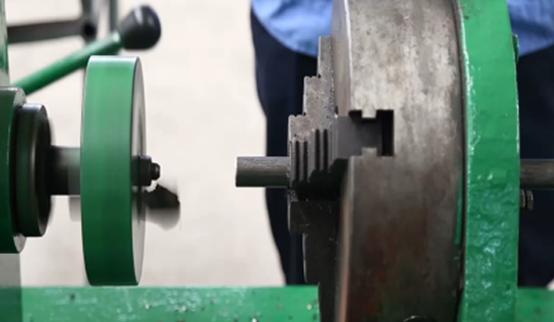 Afrikaans
Afrikaans  Albanian
Albanian  Amharic
Amharic  Arabic
Arabic  Armenian
Armenian  Azerbaijani
Azerbaijani  Basque
Basque  Belarusian
Belarusian  Bengali
Bengali  Bosnian
Bosnian  Bulgarian
Bulgarian  Catalan
Catalan  Cebuano
Cebuano  Corsican
Corsican  Croatian
Croatian  Czech
Czech  Danish
Danish  Dutch
Dutch  English
English  Esperanto
Esperanto  Estonian
Estonian  Finnish
Finnish  French
French  Frisian
Frisian  Galician
Galician  Georgian
Georgian  German
German  Greek
Greek  Gujarati
Gujarati  Haitian Creole
Haitian Creole  hausa
hausa  hawaiian
hawaiian  Hebrew
Hebrew  Hindi
Hindi  Miao
Miao  Hungarian
Hungarian  Icelandic
Icelandic  igbo
igbo  Indonesian
Indonesian  irish
irish  Italian
Italian  Japanese
Japanese  Javanese
Javanese  Kannada
Kannada  kazakh
kazakh  Khmer
Khmer  Rwandese
Rwandese  Korean
Korean  Kurdish
Kurdish  Kyrgyz
Kyrgyz  Lao
Lao  Latin
Latin  Latvian
Latvian  Lithuanian
Lithuanian  Luxembourgish
Luxembourgish  Macedonian
Macedonian  Malgashi
Malgashi  Malay
Malay  Malayalam
Malayalam  Maltese
Maltese  Maori
Maori  Marathi
Marathi  Mongolian
Mongolian  Myanmar
Myanmar  Nepali
Nepali  Norwegian
Norwegian  Norwegian
Norwegian  Occitan
Occitan  Pashto
Pashto  Persian
Persian  Polish
Polish  Portuguese
Portuguese  Punjabi
Punjabi  Romanian
Romanian  Russian
Russian  Samoan
Samoan  Scottish Gaelic
Scottish Gaelic  Serbian
Serbian  Sesotho
Sesotho  Shona
Shona  Sindhi
Sindhi  Sinhala
Sinhala  Slovak
Slovak  Slovenian
Slovenian  Somali
Somali  Spanish
Spanish  Sundanese
Sundanese  Swahili
Swahili  Swedish
Swedish  Tagalog
Tagalog  Tajik
Tajik  Tamil
Tamil  Tatar
Tatar  Telugu
Telugu  Thai
Thai  Turkish
Turkish  Turkmen
Turkmen  Ukrainian
Ukrainian  Urdu
Urdu  Uighur
Uighur  Uzbek
Uzbek  Vietnamese
Vietnamese  Welsh
Welsh  Bantu
Bantu  Yiddish
Yiddish  Yoruba
Yoruba  Zulu
Zulu conveyor pulley specification
Conveyor Pulley Specification An Essential Guide
Conveyor systems are integral to various industries, from mining and manufacturing to logistics and food processing. Among the critical components of these systems are conveyor pulleys, which are essential for the efficient movement of materials. Understanding the specifications of conveyor pulleys is crucial for ensuring optimal performance and longevity of the equipment. This article delves into the key specifications and considerations for selecting the right conveyor pulley.
Types of Conveyor Pulleys
Conveyor pulleys come in several types, each designed for specific applications. The most common types include
1. Drive Pulley This is the main pulley connected to the drive motor, responsible for powering the conveyor belt. 2. Idler Pulley Idler pulleys support the belt and maintain tension, but do not drive it. They play a critical role in the system's overall efficiency.
3. Tail Pulley Positioned at the tail end of the conveyor, this pulley helps in returning the belt and facilitates material discharge.
4. Snub Pulley This is used to increase the angle of wrap on the drive pulley, enhancing the friction and supporting better belt grip.
5. Return Pulley Located at the return side of the belt, it allows the belt to return to the drive pulley.
Key Specifications
When selecting conveyor pulleys, several specifications must be considered to ensure compatibility and efficiency
1. Diameter The diameter of the pulley affects the conveyor’s capacity and speed. Larger diameters can increase the load capacity but may require more power to drive.
2. Width The width of the pulley should match the width of the conveyor belt. This ensures that the belt runs smoothly and does not wear out prematurely.
3. Material Conveyor pulleys are typically made from materials such as steel, aluminum, or plastic. The choice of material impacts durability, resistance to corrosion, and the weight of the pulley.
conveyor pulley specification

4. Weight and Load Capacity Understanding the weight that a pulley can handle is vital. The design must accommodate the maximum load of the materials being transported to prevent premature failure.
5. Belt Tension The pulley specification should account for the maximum tension exerted by the belt. Proper tensioning reduces slippage and wear.
6. Shaft Size The shaft size is important for fitting into the conveyor frame and impacts the pulley’s overall strength and performance.
7. Type of Bearings The selection of bearings affects operational efficiency. Options include sealed bearings, which require less maintenance, and other types that may provide better load capacity under certain conditions.
8. Finish The surface finish of the pulley is significant as it affects frictional properties and wear resistance. Options may include powder coating or galvanizing for enhanced durability.
Importance of Proper Specification
Selecting the right conveyor pulley is vital for several reasons
- Efficiency Correctly specified pulleys ensure smooth operation, reducing strain on the entire conveyor system. - Safety Proper specifications help prevent failures that can lead to accidents, ensuring a safe working environment.
- Cost-Effectiveness Investing in the right pulleys reduces maintenance costs and prolongs the lifespan of the conveyor system.
- Performance Tailored specifications to the application ensure that the conveyor operates at optimal performance levels, handling the required load without issues.
Conclusion
In summary, understanding conveyor pulley specifications is essential for the effective functioning of conveyor systems. Businesses must consider various factors, including type, diameter, material, and load capacity, to make informed decisions. Proper selection not only enhances efficiency and safety but also contributes to the overall success of material handling operations. Taking the time to choose the right conveyor pulley can lead to significant long-term benefits, making it a critical aspect of industrial design and maintenance.
-
Revolutionizing Conveyor Reliability with Advanced Rubber Lagging PulleysNewsJul.22,2025
-
Powering Precision and Durability with Expert Manufacturers of Conveyor ComponentsNewsJul.22,2025
-
Optimizing Conveyor Systems with Advanced Conveyor AccessoriesNewsJul.22,2025
-
Maximize Conveyor Efficiency with Quality Conveyor Idler PulleysNewsJul.22,2025
-
Future-Proof Your Conveyor System with High-Performance Polyurethane RollerNewsJul.22,2025
-
Driving Efficiency Forward with Quality Idlers and RollersNewsJul.22,2025





























